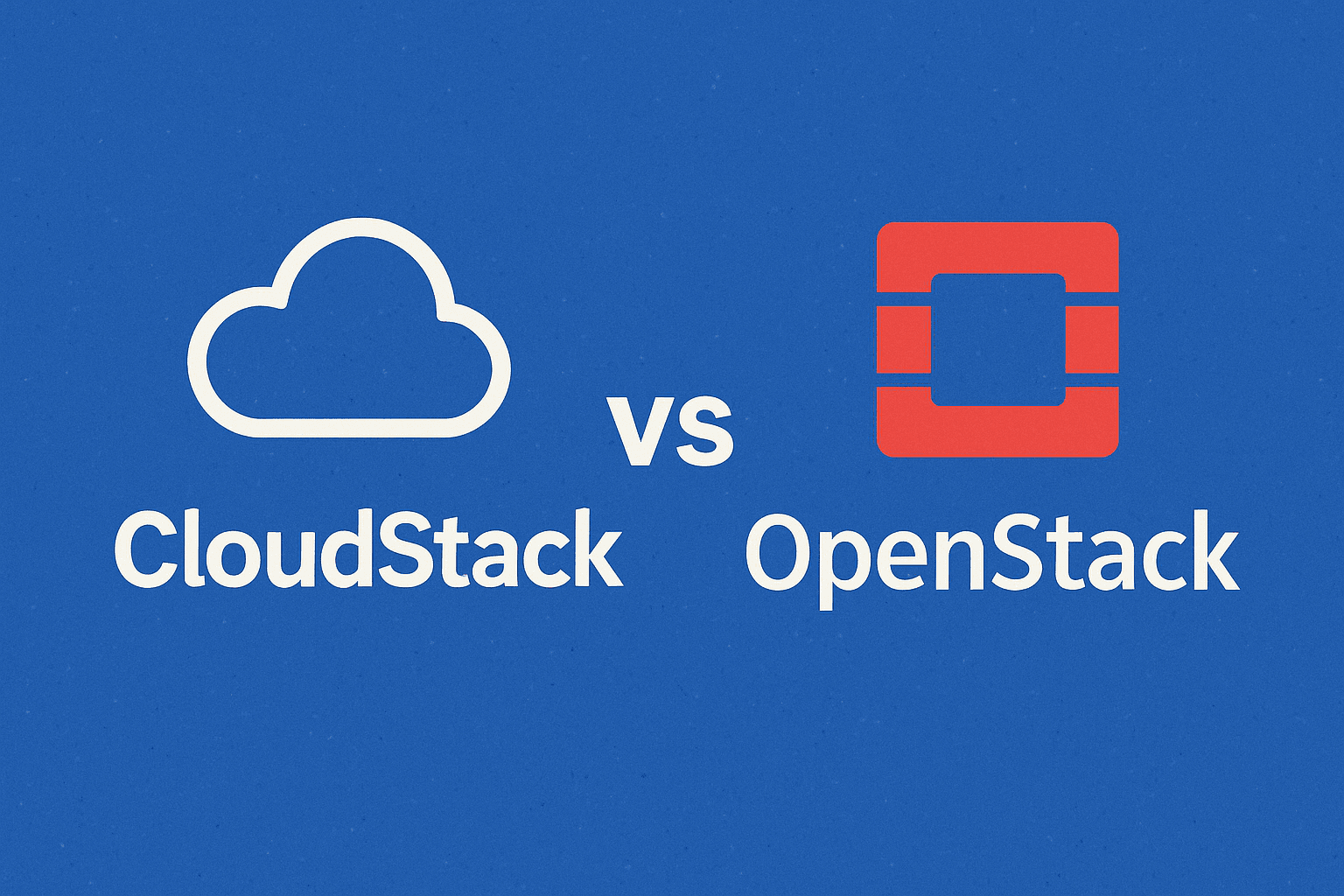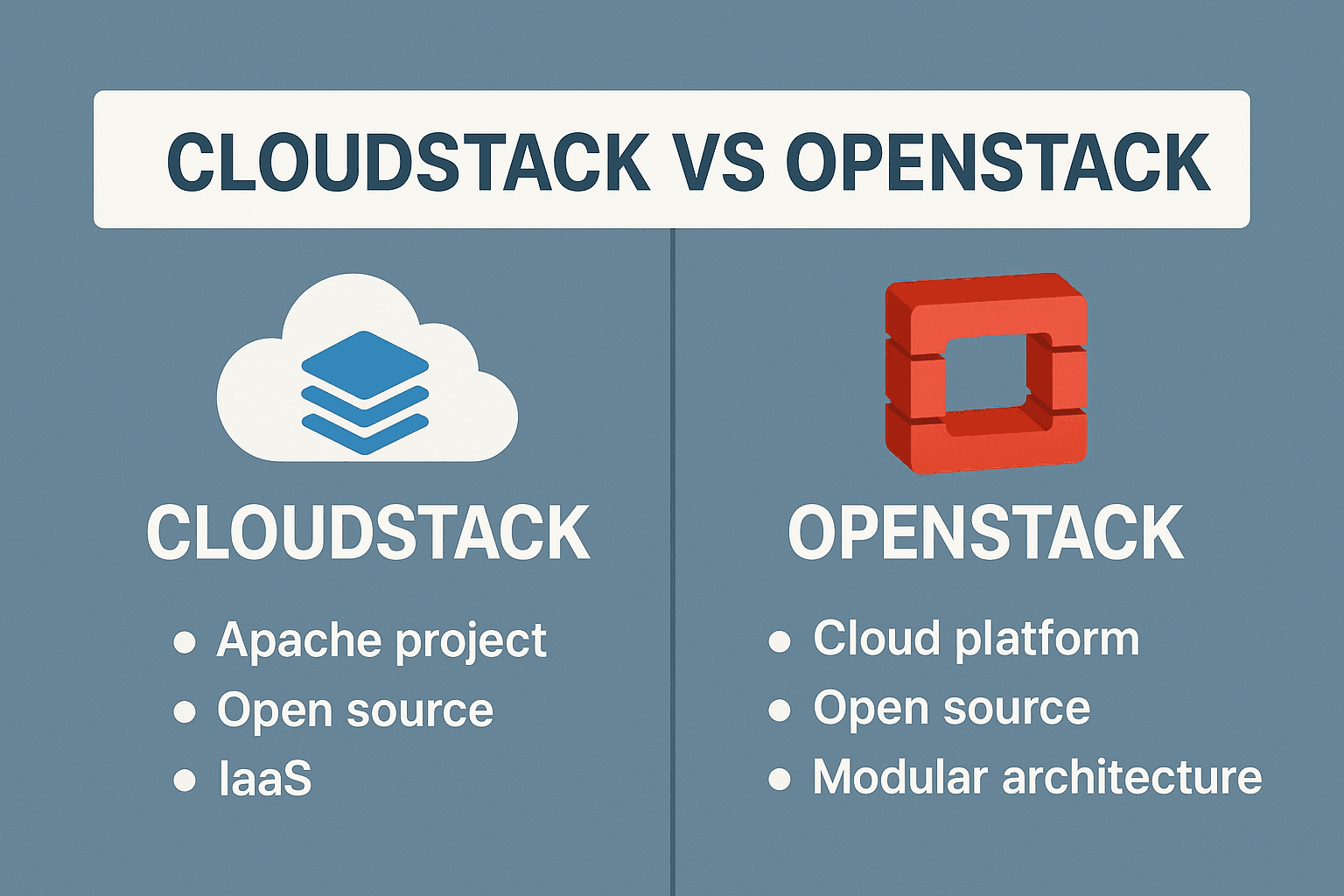
If you’re comparing CloudStack and OpenStack to build your private cloud, the decision largely depends on your team’s scale, expertise, and infrastructure goals.
Both platforms offer infrastructure orchestration, multi-tenant support, and open-source control, but their architecture and complexity differ in major ways. Let’s break it down clearly and show how Simplyblock supports both with high-performance, software-defined storage.
🚀 Use Simplyblock with CloudStack or OpenStack
Run high-performance NVMe block storage across both platforms — simple to integrate, fast to scale, and built for virtualization.
👉 Use Simplyblock for Software-Defined Storage →
What CloudStack Brings to Private Cloud Teams
CloudStack is known for its simplicity and ease of use. Many teams favor it for building and managing private clouds without needing a massive engineering investment. It’s especially popular in SMBs, telco, and academic settings where full-featured orchestration is needed without steep complexity. It’s well-suited for CloudStack environments that need low-complexity infrastructure.
🔹 Why Teams Like CloudStack
- Simple deployment with fewer moving parts
- Lower maintenance and faster learning curve
- Built-in dashboard for managing VMs, networks, and storage
- Role-based access control and API support
🔹 What CloudStack Supports Out of the Box
CloudStack supports multiple hypervisors, including KVM, VMware, and XenServer. Its UI is straightforward, and the orchestration layer handles compute, networking, and storage without needing extensive customization. The CloudStack features make it accessible for mid-sized IT teams who want a dependable private cloud with less overhead.
🔹 Where CloudStack Works Well
- Telco-grade cloud platforms
- Internal IaaS for SMBs or research labs
- Virtual machine hosting and network segmentation
- Teams needing fast provisioning without a full DevOps stack

Why Some Teams Choose OpenStack Instead
OpenStack is a better fit when you need more control, flexibility, and scale. It’s widely used in enterprise IT, telco, and academic environments where complex infrastructure needs to be tightly managed and automated. OpenStack environments benefit from flexible storage integration and vendor-neutral automation.
🔹 Why OpenStack Is Popular for Scale
- Designed for scale with a flexible module-based setup
- Large open-source community and vendor support
- Fully API-driven infrastructure
- Customizable networking and storage layers
🔹 Core Capabilities of OpenStack
OpenStack consists of modular services like Nova (compute), Neutron (networking), and Cinder (block storage). These modules allow teams to design infrastructure exactly as they need it. The OpenStack architecture supports horizontal scaling, multi-region clusters, and deep multi-tenancy.
🔹 When OpenStack Is the Right Fit
- Enterprise private clouds with high availability
- Telco and multi-region edge deployments
- Virtual machine orchestration at massive scale
- Environments using automation, IaC, and CI/CD pipelines
CloudStack vs OpenStack Compared Across Key Areas
When deciding between CloudStack and OpenStack, it helps to see how they align across architecture, scalability, and day-to-day management. Here’s a quick breakdown to guide your decision.
| Category | CloudStack | OpenStack |
| Architecture | Monolithic, simpler to deploy | Modular, flexible, but complex |
| Use Case Fit | Mid-sized private clouds, SMBs, telcos | Large-scale enterprises, service providers |
| Hypervisor Support | KVM, VMware, XenServer | KVM (native), others via plugins |
| Scalability | Horizontal scaling, fewer components | Multi-region, multi-tenant, datacenter-scale |
| Deployment Effort | Low | High |
| Community & Ecosystem | Smaller but active | Broad global adoption, vendor support |
Storage Designed for Open Cloud Platforms
Simplyblock supports both CloudStack and OpenStack with high-performance, software-defined block storage built for flexibility and scale.
For CloudStack
Simplyblock integrates with CloudStack using its native drivers and supports fast, persistent storage for virtual machines. It simplifies volume lifecycle management and allows faster recovery and cloning across multi-availability zones.
For OpenStack
Simplyblock plugs into OpenStack through the Cinder API, delivering dynamic provisioning and NVMe performance across projects and tenants. It’s ideal for disaggregated storage scenarios and database performance optimization.
Benefits of Using Simplyblock with Both
- End-to-end NVMe over TCP
- Thin provisioning and snapshots
- High throughput and low latency
- Multi-cluster consistency and fast provisioning
Which Platform Fits Your Cloud Strategy
CloudStack is simpler to deploy and manage, making it a solid pick for lean teams and straightforward VM-based workloads. OpenStack offers more customization and scale, but requires deeper infrastructure expertise.
Either way, Simplyblock gives both platforms the performance and flexibility modern environments demand, with high-speed storage that just works.
Questions and answers
CloudStack is a simpler, monolithic IaaS platform optimized for ease of deployment and stability. OpenStack, in contrast, is modular and more flexible, with broader support for plugins and large-scale multi-tenant environments. Simplyblock supports both platforms with flexible storage integration.
CloudStack is known for faster and more straightforward setup, while OpenStack has a steeper learning curve but offers more customization. For both, Simplyblock enables rapid storage provisioning with API-driven orchestration and CSI or Cinder integrations.
Yes. Simplyblock delivers NVMe-over-Fabrics performance and supports OpenStack Cinder and Kubernetes CSI, making it compatible with CloudStack storage plugins and OpenStack volumes alike.
CloudStack typically integrates with basic NFS or iSCSI storage backends. OpenStack uses services like Cinder for dynamic block storage and Swift for object storage. Simplyblock supports both via software-defined storage that works across container and VM ecosystems.
OpenStack is more suited for hyperscale environments due to its modularity and advanced multi-tenancy features. CloudStack excels in simplicity and ease of management for medium-scale clouds. Simplyblock supports both via multi-tenant storage with QoS and robust data isolation.
